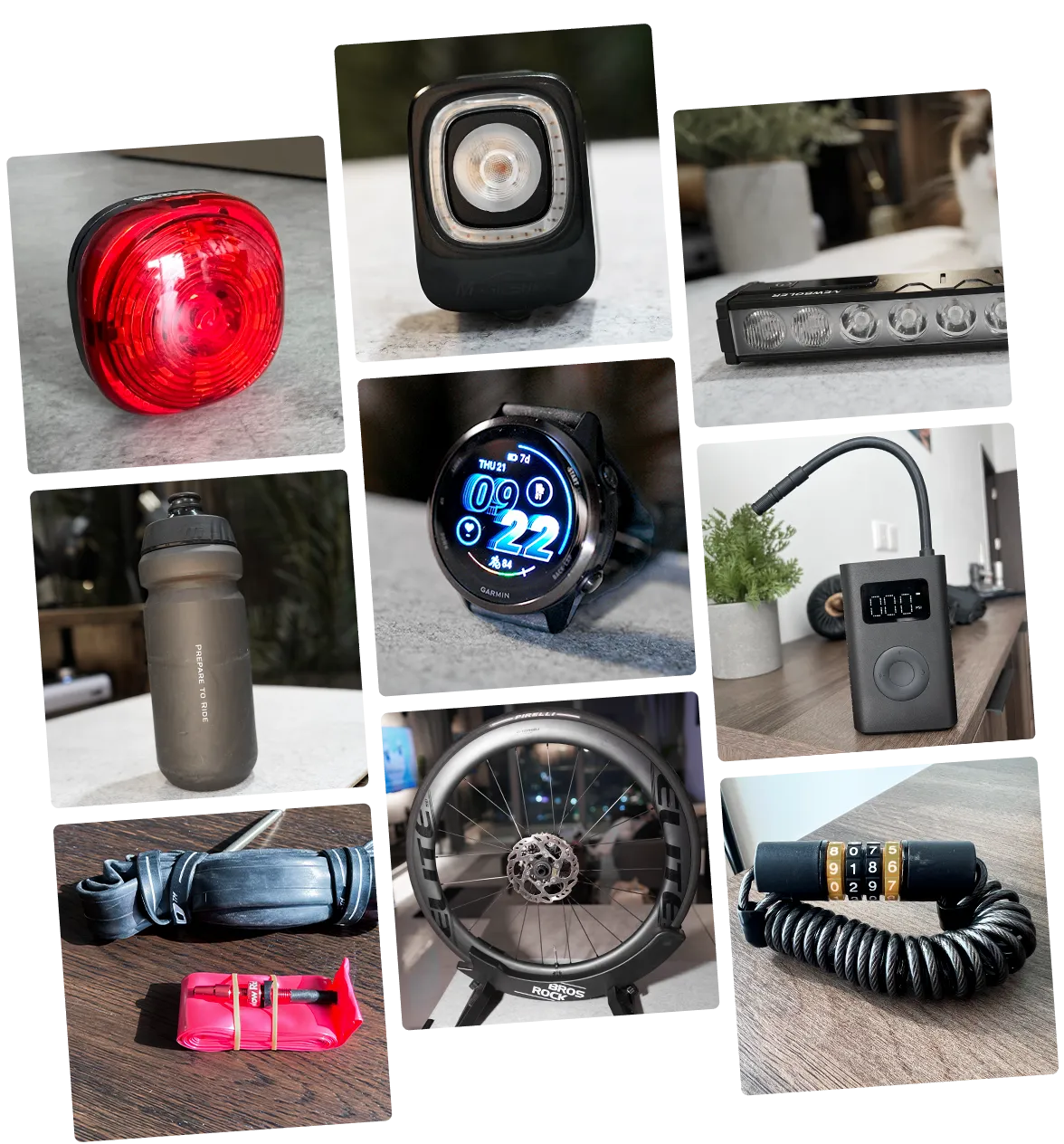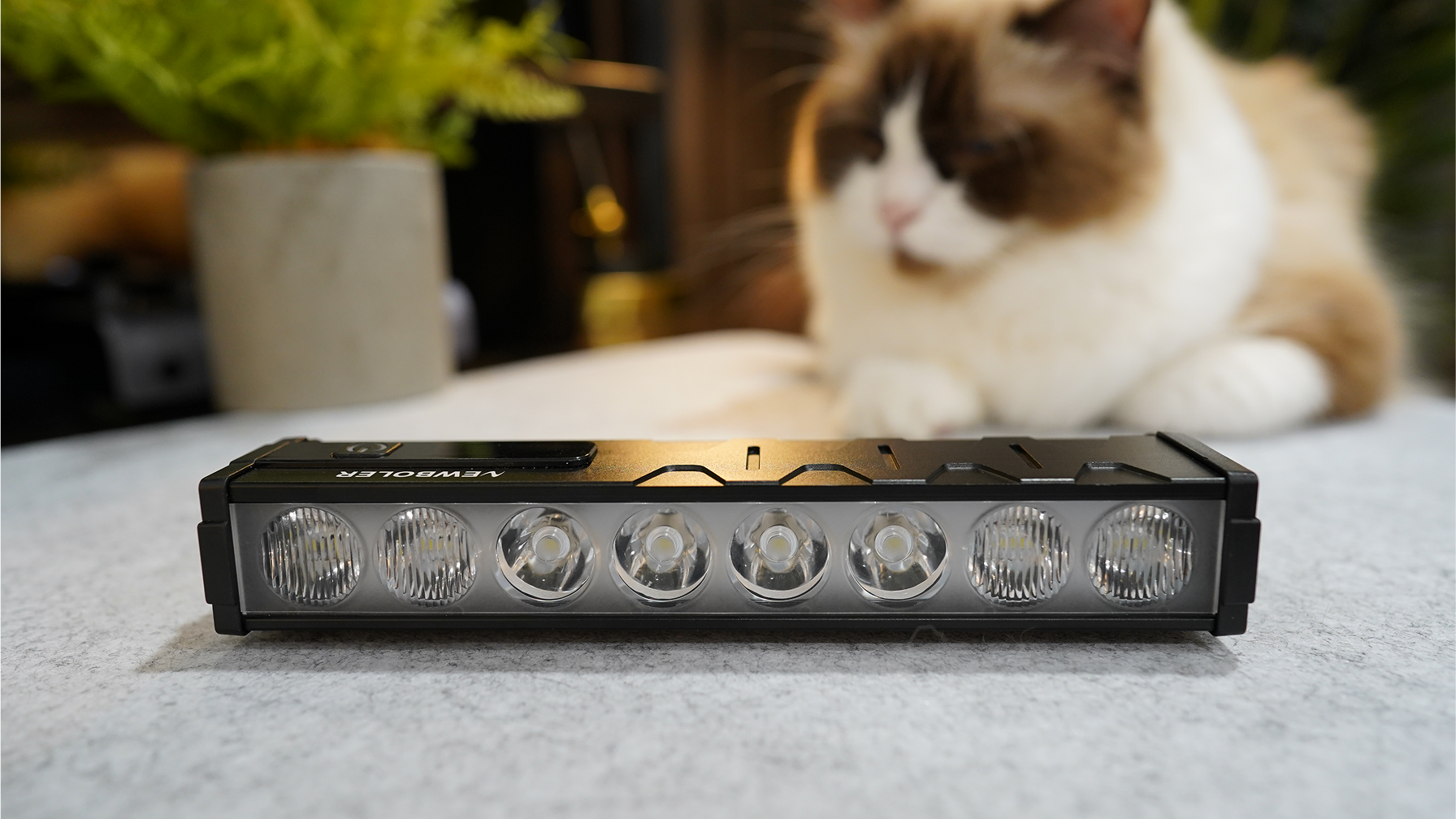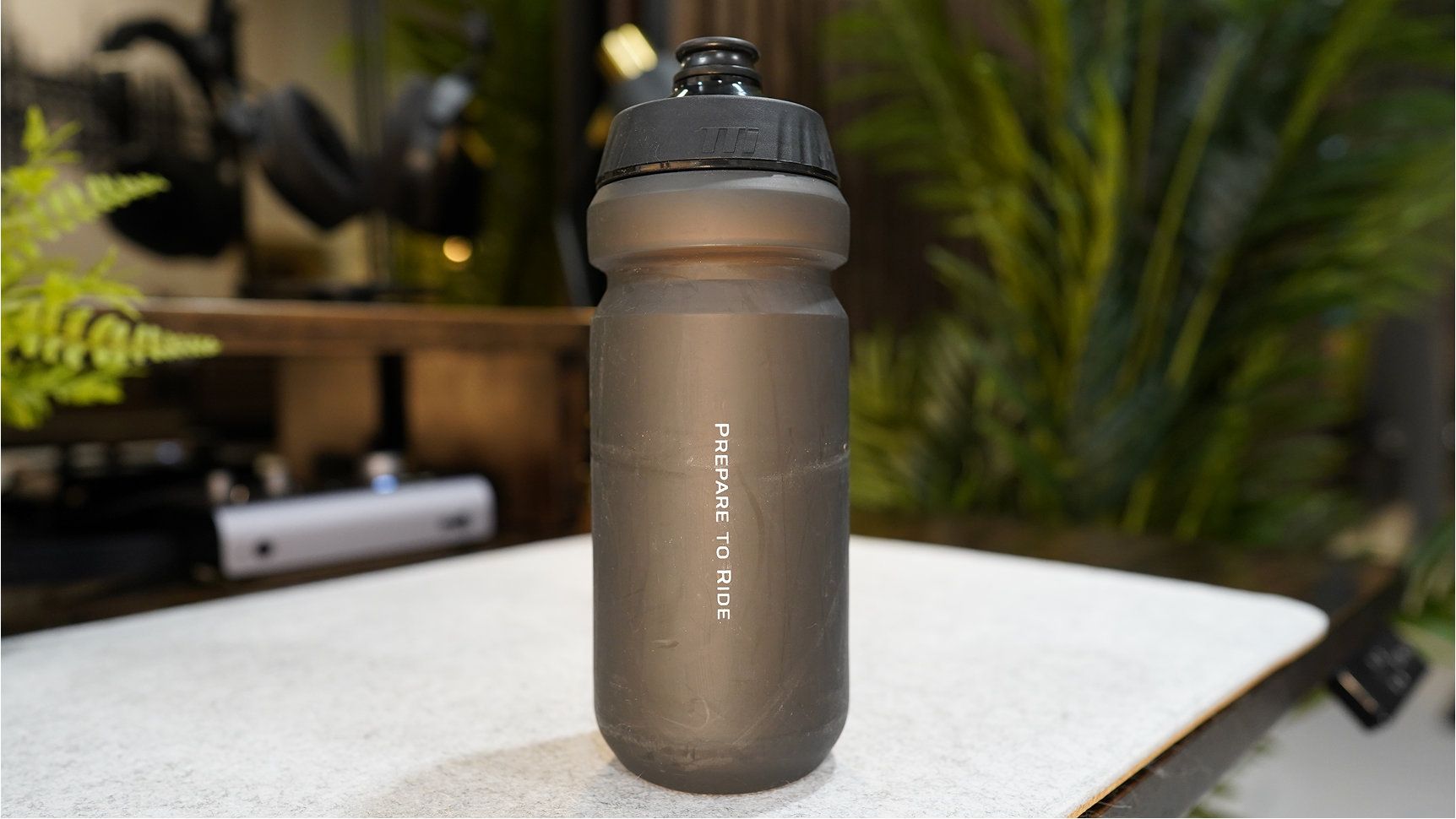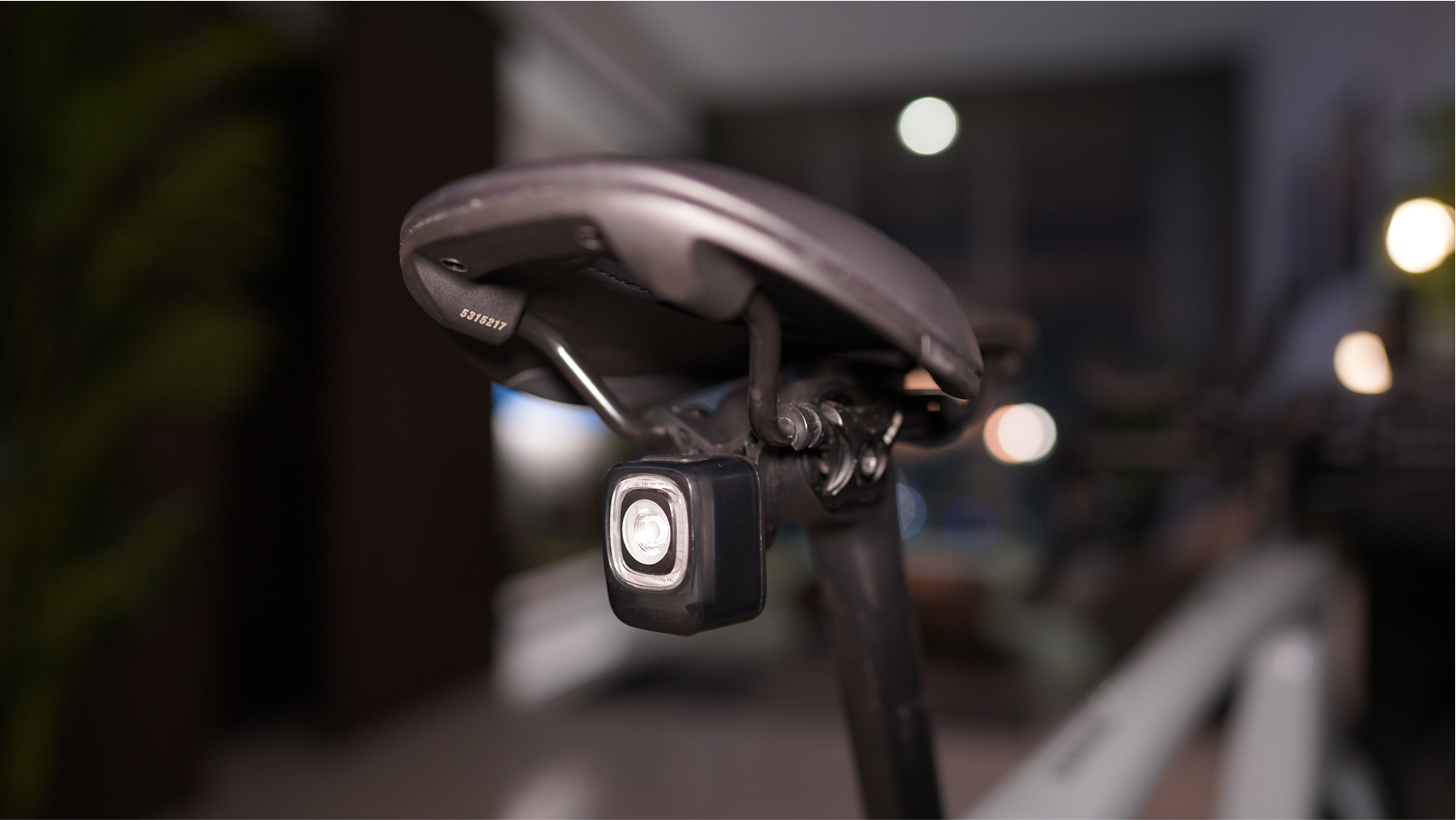
Join my newsletter to receive weekly cycling gear recommendations

Join my newsletter to receive weekly cycling gear recommendations

Garmin Forerunner 570 Review
The Garmin Forerunner 570 is an excellent multisport watch that excels at training guidance and battery life, but the $200 premium over the Forerunner 265 makes it hard to recommend unless you specifically need the larger display and premium build quality.


Garmin Forerunner 570 Review: 2 Months of Daily Use - Is It Worth the $550 Price Tag?
Looking for an honest Garmin Forerunner 570 review from someone who's actually used it every day? After two months of putting this watch through triathlon training, daily wear, and everything in between, I'll tell you exactly whether it's worth upgrading from the Forerunner 265 - and what it's really like to live with this watch.
Not just the specification list you can read on Garmin's website, but the real experience - the things that will either make you love this watch or not. I bought this Forerunner 570 42mm for the full $550 with my own money, and after daily use training for triathlons, do I regret this decision? Let me break it down.

Quick Verdict: 4/5 Stars
The Bottom Line: The Garmin Forerunner 570 is an excellent multisport watch that excels at training guidance and battery life, but the $200 premium over the Forerunner 265 makes it hard to recommend unless you specifically need the larger display and premium build quality.
Best For: Serious multisport athletes who want comprehensive training data and don't mind paying premium prices for incremental improvements.
Skip If: You're budget-conscious or the Forerunner 265 already meets your needs - the improvements don't justify the significant price jump for most users.
Size and Design Options: Finding Your Perfect Fit
The Forerunner 570 comes in two sizes: 42mm and 47mm. I chose the 42mm version because I have smaller wrists and don't like having a huge watch strapped to my wrist. The 42mm version comes in three colors: black, white, and red, while the 47mm version offers black, turquoise, and purple options.
The 47mm version might have slightly better battery life, but comfort wins for me every time. If you want a smaller watch, only the 570 comes in a 42mm version - the bigger brother Forerunner 970 is only available in 47mm.
Design Philosophy: The Forerunner 570 is primarily a sports watch, and it feels like one. The design is functional rather than fashionable, with a utilitarian aesthetic. However, because it's black-on-black with a round face (as opposed to Apple's rectangular design), it goes with almost any outfit surprisingly well.
The new aluminum bezel gives it a more premium feel compared to the Forerunner 265, which some users complained felt like a toy when first picked up. The 570 definitely feels more substantial and premium in hand.
Detailed Features Breakdown
Battery Life: The Numbers vs Reality
Garmin claims 11 days of battery life, and in real-world testing with minimal GPS usage and basic smartwatch functions, you'll get 10-11 days. Coming from an Apple Watch that needed daily charging, the improvement - going from charging every day to every 10 days - has been transformative.
The Always-On Display Dilemma: I've extensively tested both options. With always-on display turned off, the watch display stays dark until you flick your wrist, then turns on with a very slight delay - literally a split second, but still noticeable. I initially liked having always-on display enabled because I don't want to obnoxiously stick my arm up to check the time during meetings. Sometimes I just want to discreetly glance at my watch.
However, enabling always-on display reduces battery life from 10-11 days to just 3-4 days. After weeks of testing both options, I chose the 11-day battery life. The convenience of rarely charging outweighs the minor inconvenience of the wrist-flick delay.
Battery Predictability: The battery indicator is remarkably accurate. When it shows 50% with 5 days remaining, it delivers exactly that. Unlike my iPhone where battery randomly drains from 10% to 0%, the Garmin is consistent. I know exactly when I need to charge it, and charging is fast enough that every 10-11 days, I can go from 0% to 100% during my morning shower.
Real-World Endurance Testing: This predictable battery life was one of the main triggers for switching from Apple Watch. I completed an Ironman 70.3 triathlon recently, and my Apple Watch battery just barely lasted the entire event. The Garmin Forerunner would have easily lasted the entire event with days to spare. My criteria is simple: if I can complete a full Ironman triathlon with at least 25% battery remaining, I'm satisfied. The 570 easily manages that.
Battery Comparison Context: The 11-day battery life is actually a downgrade from the predecessor Forerunner 265, which had 13 days, and the bigger brother Forerunner 970 has up to 15 days. Still, 11 days is excellent and not worth complaining about.
Physical Buttons: Why They Actually Matter
I didn't think I'd care about physical buttons until I started using them regularly. Now I can't imagine going back to a purely touchscreen watch. I previously used an Apple Watch Series 9, which was overall a good watch but became awful - sometimes impossible - to use when my hands were wet from swimming or if I had gloves on.
Swimming Performance: With the Garmin's five physical buttons, I can change data screens, pause workouts, or mark laps without any issues while swimming. The buttons work flawlessly regardless of water conditions.
Cycling and Running: The same reliability applies to cycling with gloves, running in the rain, or any situation where your hands aren't perfectly clean and dry. The buttons just work, every time. They're positioned well enough that you can operate them without looking, which is crucial when you're focused on the road or trail ahead.
Tactile Feedback: The buttons are satisfying to press with a solid click that gives you confidence the input registered. During intense workouts when you're not thinking clearly, that tactile feedback is reassuring.
Learning Curve: There is a learning curve - it took me about 2 weeks to remember which button does what, as there are 5 buttons each doing different things. Once mastered, the interface becomes intuitive and immediate.
Training Features That Actually Work
Daily Training Readiness - The Game Changer: This is the feature I mentioned that completely changed how I approach training. Every morning, the watch analyzes your recent training load, recovery status, and sleep quality to provide a training readiness score from 1-100.
The score isn't arbitrary - it's based on multiple physiological markers including heart rate variability, sleep quality, and recent training stress. Sometimes it suggests an easy recovery run, sometimes interval training, sometimes complete rest. Over time, you learn to correlate the score with how you actually feel, building trust in the system.
Preventing Overtraining: This feature is particularly valuable for someone like me who's prone to overtraining. Sometimes I just don't listen to my body - even when exhausted, I'll train anyway and then get injured. I had to bail out of a full marathon late last year because I overtrained, injured my knee, and couldn't even enter the race I'd spent months training for.
Now I spend at least 15 minutes every day stretching to keep injuries at bay, and having the watch tell me when to rest is like having a personal trainer looking over my shoulder telling me to calm down - which is apparently very much needed.
Daily Workout Suggestions: The watch recommends specific workouts based on your current fitness state. What makes this valuable is preventing the classic training mistake of going too hard too often. I used to follow whatever workout plan I found online, regardless of how tired I felt. The Garmin's suggestions have helped me train more intelligently and avoid overuse injuries.
Comprehensive Workout Library: The daily suggested workouts feature provides workouts specifically tailored to you based on your data. The workout library is extensive and well-designed, including structured interval sessions, strength training routines, yoga flows, and breathing exercises. Each workout includes visual demonstrations and proper timing, so you're not guessing about form or rest periods.
Training Data Depth: The Forerunner provides extensive data - probably more than you'll ever need. Training load and training effect metrics provide insight into what your workouts actually accomplish. Training load quantifies how hard a session was on your body, while training effect tells you whether you improved aerobic fitness, anaerobic capacity, or both. Over time, you understand which types of workouts produce which adaptations.
Race Predictor Accuracy: Based on current fitness level and recent training data, the race predictor estimates finish times for various distances. For my recent 10K, the prediction was within 30 seconds of my actual time, giving me confidence in its longer distance estimates.
Race Countdown Feature: The Garmin reminds me daily when my next big race is. I have a few small events like Oceanman swims and runs, but the big event I'm training for is another Ironman 70.3. The watch provides a countdown timer every morning showing how many days remain. This helps keep my training dialed in because I can see the number slowly counting down each morning.
GPS Accuracy and Navigation: Good but Not Great
GPS Performance: GPS accuracy is excellent for tracking runs, rides, and swims across various conditions. The tracking has been consistent and reliable throughout my testing period.
Breadcrumb Navigation: For trail running, the breadcrumb navigation feature is quite useful. It shows your exact path as a line on the map, making it easy to retrace your steps if you take a wrong turn. I've used this multiple times when exploring new trail systems where signage wasn't clear.
The Missing Feature: The one thing I wish this watch had (besides a flashlight) is proper GPS navigation like the Forerunner 970 offers. Breadcrumb navigation is adequate, but I find myself wanting turn-by-turn directions when exploring new trails or trying to navigate back to my starting point. Having to pull out my phone defeats the purpose of having such a capable $550 watch on my wrist.
Sleep Tracking: Comprehensive and Accurate
Sleep Monitoring Capabilities: Sleep tracking is comprehensive and reasonably accurate. The watch monitors sleep stages, movement, heart rate, and blood oxygen levels throughout the night. The data helps identify patterns and potential issues with sleep quality.
Real-World Accuracy: I've tested the accuracy during challenging conditions. Recently, while traveling across multiple time zones, I got about 1.5 hours of sleep one night, and the Garmin measured it accurately.
Training Integration: These sleep scores factor into training readiness calculations, creating a feedback loop that encourages better sleep habits. Poor sleep directly impacts your recommended training for the following day, making this data actionable rather than just informational.
Comfort for Overnight Wear: The watch is comfortable enough for overnight wear, and the silicone band doesn't get uncomfortably warm, even during summer months. I've had silicone bands in the past that run warm, but this one doesn't have that issue. Sleep tracking doesn't require special modes or settings - it works automatically when you wear the watch to bed.
Daily Wear Experience and Build Quality
Design Philosophy: The Forerunner 570 feels like a purpose-built sports watch. The design is functional rather than fashionable, with a utilitarian aesthetic that prioritizes performance over style.
Band Comfort and Quality: The silicone band is comfortable for workouts and has a slightly translucent quality that looks and feels premium. I much prefer this band to the Forerunner 265's band, which looks less premium in my opinion, although it might be slightly more rugged.
Professional Settings: The silicone band can look casual for professional settings. Garmin offers leather and metal bands for dressier occasions, though they add to the overall cost and reduce sporty functionality.
Daily Use Challenges: I have one small gripe with the band's buckle. Working on my laptop 8 hours a day, the buckle scratches against the laptop chassis when typing. After 2 months, there's a very small scratch on my laptop, which would likely worsen with continued use. It's not completely ruining my laptop, but it's on my mind when typing while wearing the watch.
Durability Testing Results
Real-World Wear: After two months of daily wear including swimming, running, cycling, and general outdoor activities, the watch shows very little wear. There are a few extremely small scratches on the case, so small the camera probably won't pick them up.
Screen Durability: Even though the 570 doesn't have sapphire glass like the 970, the Corning Gorilla Glass 3 is very scratch resistant. The screen remains pristine despite daily use and various activities.
Water Resistance Performance: The water resistance rating holds up to real-world use. I've swum in pools, lakes, and the ocean without any issues. The buttons remain responsive even after submersion, and water doesn't affect the display or sensors.
Band Durability: The silicone band has held up well despite frequent washing and exposure to sweat, chlorine, and saltwater. The material doesn't retain odors and dries quickly after getting wet.
Data Analysis and Connectivity
Garmin Connect App: The Garmin Connect app is comprehensive but has a learning curve. There's an overwhelming amount of data available, which can be both blessing and curse. Finding specific metrics sometimes requires digging through multiple menu levels.
Third-Party Integration: Automatic syncing with training platforms like Strava and TrainingPeaks works flawlessly. Your workouts appear on these platforms within minutes of completion, making it easy to share activities or get coaching feedback.
Web Dashboard: The web dashboard provides more detailed analysis than the mobile app, particularly for training trends and performance metrics. Advanced athletes might appreciate the depth of data available, though casual users might find it excessive.
Voice Features and Connectivity
Microphone and Speaker: The 570 includes a microphone and speaker for voice commands and phone calls. However, in my 2 months of use, I don't think I've used the microphone once. The feature exists but doesn't feel essential to the experience.
Call Quality: When making phone calls through the watch, call quality is adequate rather than excellent. It works for emergency situations but isn't something you'd want to rely on for important conversations.
Honest Pros and Cons
Pros
- Exceptional 11-day battery life eliminates charging anxiety and works for multi-day events
- Physical buttons work perfectly in any weather condition, crucial for swimming and cycling
- Training readiness feature prevents overtraining and injuries through physiological monitoring
- Comprehensive workout library with visual demonstrations and proper timing
- Accurate GPS tracking for all activities with reliable performance
- Durable build quality with minimal wear after 2 months of intensive use
- Premium feel compared to the toy-like Forerunner 265 with aluminum bezel
- Larger, brighter 1.4-inch AMOLED display improves readability in all conditions
- Excellent sleep tracking that integrates meaningfully with training recommendations
- Predictable battery performance with accurate indicators
- Comprehensive training data including load, effect, and recovery metrics
- Automatic third-party sync with platforms like Strava and TrainingPeaks
- Water resistance proven through pool, lake, and ocean swimming
- Comfortable overnight wear for sleep tracking without overheating
Cons
- $200 premium over Forerunner 265 for incremental improvements that don't justify the cost
- No turn-by-turn GPS navigation limiting exploration capabilities (only breadcrumb navigation)
- Missing flashlight feature that would be genuinely useful (available on Forerunner 970)
- Learning curve for mastering the 5-button interface takes approximately 2 weeks
- Watch band buckle scratches laptops during extended typing sessions
- Overwhelming amount of data can be confusing and excessive for casual users
- Utilitarian design looks sporty rather than fashionable for professional settings
- Voice features underutilized - microphone and speaker feel unnecessary
- Always-on display trade-off significantly reduces battery life when enabled
- Shorter battery life than predecessor (11 days vs 13 days on Forerunner 265)
- Limited size options compared to having both 42mm and 47mm choices
- App learning curve with complex menu structures for finding specific data

Competition Comparison
Garmin Forerunner 570 vs. Forerunner 265: The Value Question
Winner: Forerunner 265 (Better Value)
The Forerunner 265 offers 13 days of battery life (2 days more than the 570), identical training features, and costs $200 less at $350.
570 Advantages
- Larger 1.4-inch AMOLED display vs 1.3-inch on 265
- Premium aluminum bezel and build quality
- Latest Elevate 5 heart rate sensor
- Microphone and speaker for calls
- More premium feel in hand
265 Advantages
- $200 lower price point
- 13-day battery life vs 11 days
- Identical training features and capabilities
- Same GPS accuracy and sports tracking
- Proven reliability and performance
Verdict: The 265 offers 90% of the 570's functionality for 64% of the price. Unless you specifically need the larger display or premium build quality, the 265 is the smarter choice.
Garmin Forerunner 570 vs. Forerunner 970: Premium Features
Winner: Depends on Your Needs
The Forerunner 970 at $750 represents the premium tier with significant additional features.
970 Advantages
- Built-in flashlight (genuinely useful feature)
- Sapphire glass for superior scratch resistance
- Full GPS mapping with turn-by-turn navigation
- 15-day battery life vs 11 days
- More comprehensive navigation features
570 Advantages
- Available in 42mm size (970 only comes in 47mm)
- $200 lower price point
- Identical training features and sports tracking
- Same premium build quality and display technology
Verdict: If you need the additional features and don't mind the larger 47mm size, the 970 offers better value in the premium category. The GPS mapping alone might justify the upgrade for serious adventurers.
Garmin Forerunner 570 vs. Apple Watch Series 10: Different Philosophies
Winner: Forerunner 570 (For Athletes)
These watches serve different purposes, but for serious athletes, the Forerunner 570 wins decisively.
570 Advantages
- 11-day battery life vs daily charging requirement
- Physical buttons work in all weather conditions
- Comprehensive training data and analysis
- Superior GPS accuracy for outdoor activities
- Water resistance proven for swimming
- Training readiness and recovery features
- Dedicated sports tracking capabilities
Apple Watch Advantages
- Superior app ecosystem and third-party support
- Better smartwatch features and notifications
- More fashionable design options
- Seamless iOS integration
- Better for casual fitness tracking
- Superior for non-fitness smartwatch functions
Verdict: The Apple Watch excels as a smartwatch with fitness features, while the Forerunner 570 is a dedicated sports watch with some smart features. For serious multisport training, the Garmin's battery life and physical buttons alone make it superior.
Frequently Asked Questions
Upgrade and Comparison Questions
Q: Is the Garmin Forerunner 570 worth upgrading from the 265?
A: For most users, no. The 265 offers better battery life (13 vs 11 days), identical training features, and costs $200 less. Only upgrade if you specifically need the larger display, premium build quality, or latest heart rate sensor.
Q: What's the real-world difference between 42mm and 47mm sizes?
A: The 42mm is significantly more comfortable for daily wear, especially if you have smaller wrists or sleep with the watch on. The 47mm offers slightly better battery life and larger display but can feel bulky. I chose 42mm for comfort and don't regret it.
Q: How does the 570 compare to the 970 for the extra $200?
A: The 970 adds a flashlight, sapphire glass, full GPS mapping, and 15-day battery life. However, it's only available in 47mm. If you need proper navigation and don’t mind the larger size, the 970 offers better value in the premium tier.
Performance and Accuracy Questions
Q: How accurate is the heart rate monitor during swimming?
A: Reasonably accurate for training zones, though not perfect. For maximum accuracy, pair with a chest strap.
Q: Does GPS accuracy suffer in challenging conditions?
A: Performance has been excellent across forests, urban canyons, and cloudy conditions. Multi-GNSS ensures reliable tracking.
Q: How accurate is the race time predictor?
A: Surprisingly accurate. Predictions were within 30 seconds of actual times in my testing, provided consistent training data is available.
Daily Use and Practical Questions
Q: Can I make phone calls with the Forerunner 570?
A: Yes, though call quality is only adequate. Useful in emergencies but not ideal for regular conversations.
Q: How comfortable is it for all-day wear including sleep?
A: Very comfortable. The silicone band doesn’t overheat, and the 42mm size is unobtrusive even during sleep.
Q: Does the always-on display significantly impact battery life?
A: Yes. It reduces battery life from 11 days to 3–4 days. I recommend disabling it to preserve endurance.
Technical and Connectivity Questions
Q: Does the watch work with third-party apps like Strava?
A: Yes, syncing is automatic and reliable with Strava, TrainingPeaks, and other platforms.
Q: How durable is the Corning Gorilla Glass 3 screen?
A: Very durable. After 2 months of use, only microscopic, barely visible scratches.
Q: Can I navigate back to my starting point without full GPS mapping?
A: Yes, via breadcrumb navigation. It retraces steps but lacks turn-by-turn directions.
Q: How well does it handle water activities beyond swimming?
A: Excellent. Works reliably in pools, lakes, and ocean swims with no issues.
Value and Purchase Questions
Q: Is this watch worth $550 for a casual runner?
A: Probably not. The Forerunner 265 or simpler models offer better value for casual users.
Q: What accessories are worth buying?
A: Screen protector (optional), alternative bands, and a chest strap for swimming HR accuracy.
Q: Should I wait for a newer model or price drops?
A: Major price drops are unlikely soon, but seasonal sales may offer 10–15% off.
Final Thoughts: The Honest Assessment
After two months of daily use across swimming, cycling, running, and strength training, the Garmin Forerunner 570 has proven itself as an indispensable training partner.
The training readiness feature alone has changed how I approach workouts, preventing overtraining and optimizing recovery. Battery life is excellent, and the physical buttons make a world of difference in challenging conditions.
That said, the Forerunner 265 is the better value for most athletes. It offers nearly the same functionality for $200 less, with even longer battery life. The 970, meanwhile, provides true premium features like GPS mapping that the 570 lacks.
Reality Check: The Forerunner 570 is excellent but priced about $100 too high. I don’t regret the purchase, but I recognize that the 265 makes more sense for most buyers.
Final Rating: 4/5 Stars
Excellent performance, questionable value, but a training partner that genuinely improves your athletic journey if you can justify the premium.








